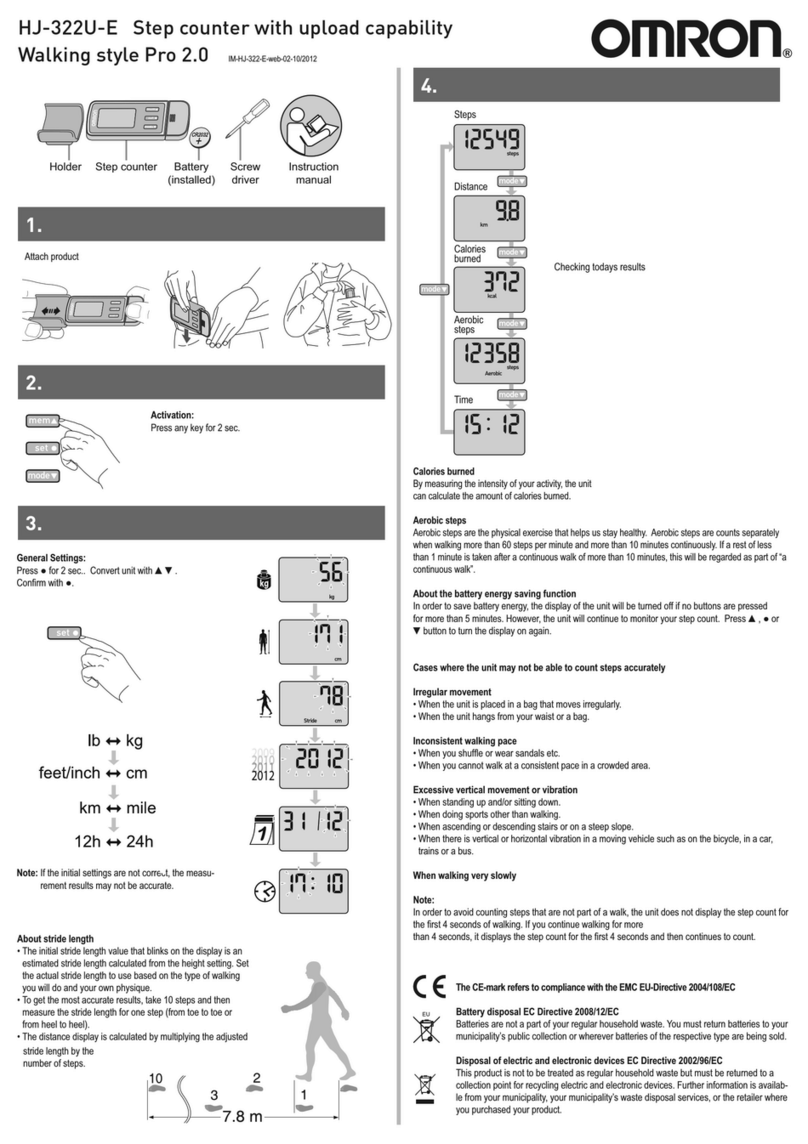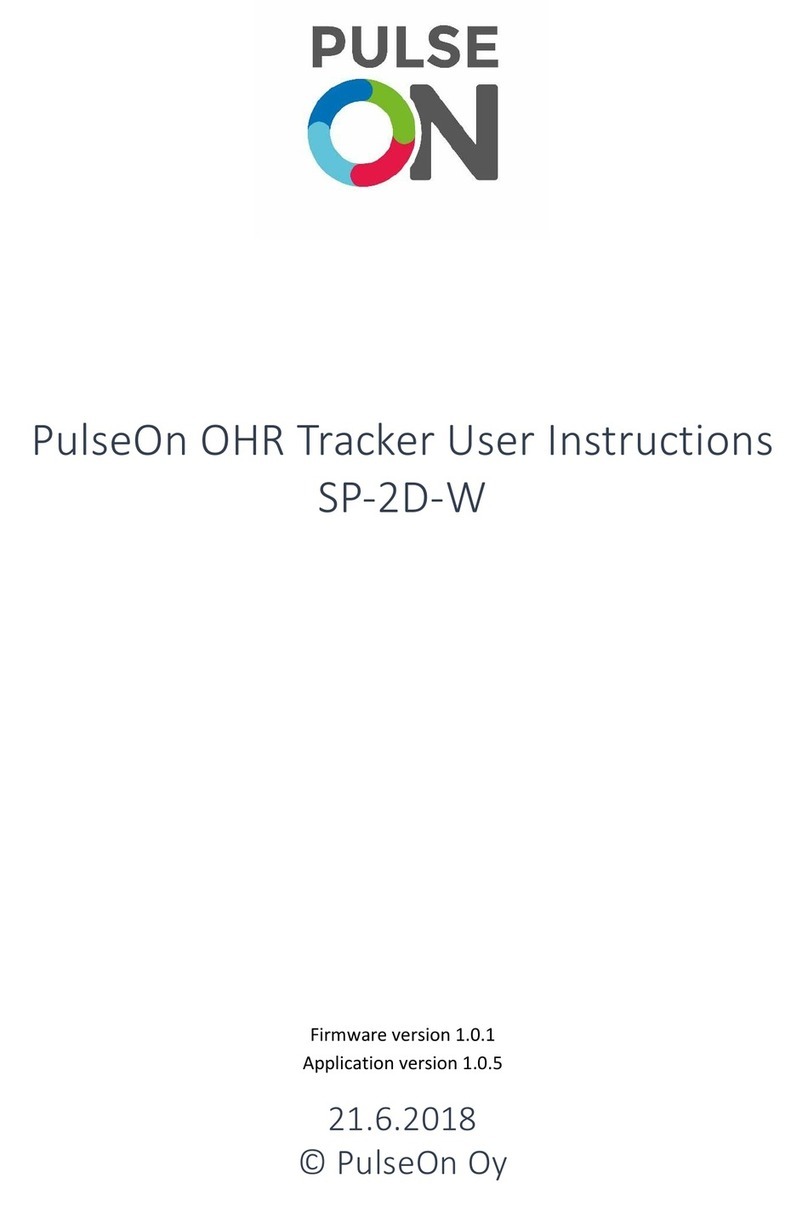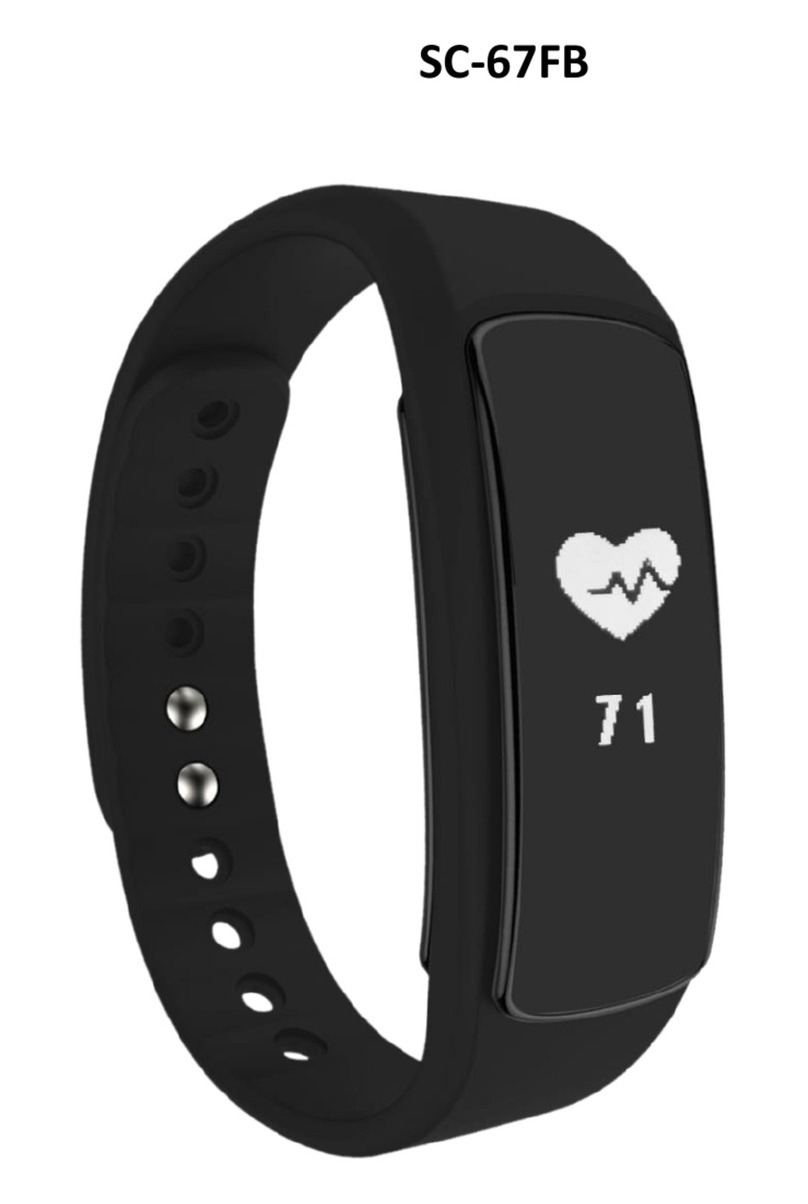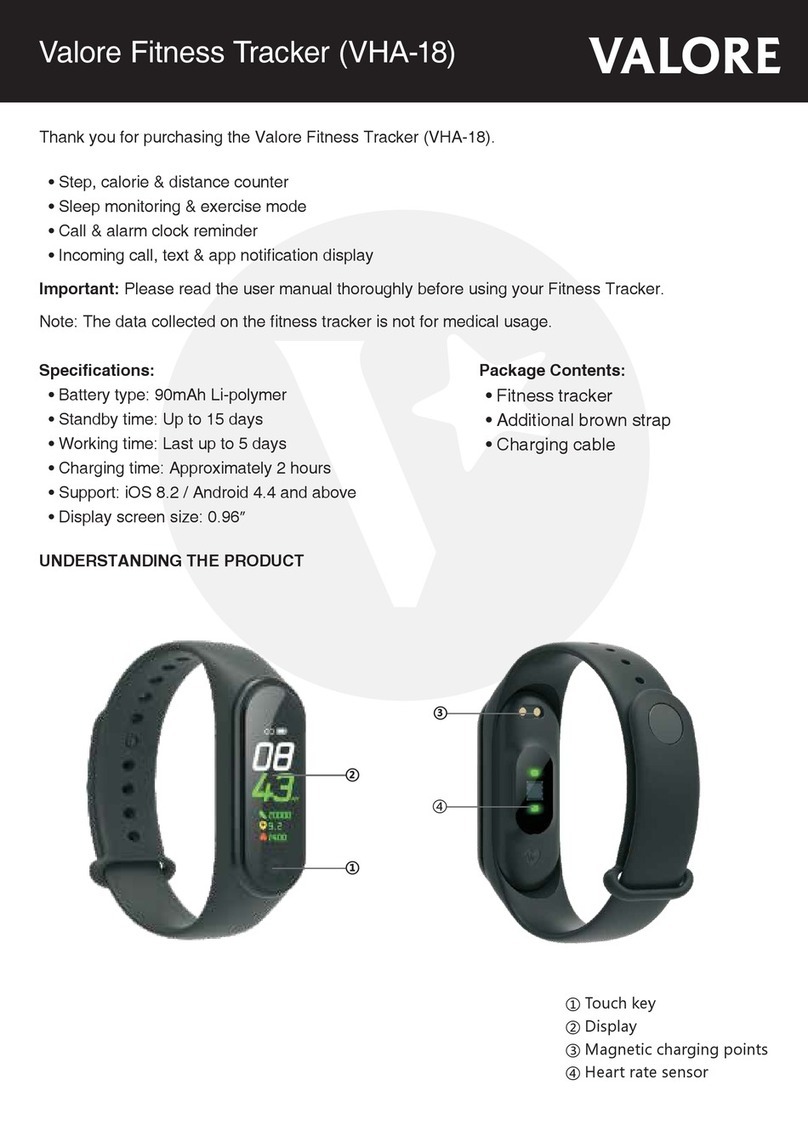METER GROUP PAWKIT User manual

Portable Water Activity Measurement System
Operator’s Manual
METER Group, Inc.
Version: July 19, 2017 — 07:03:59

Pawkit
METER Group, Inc.
2365 NE Hopkins Court
Pullman WA 99163
Phone: 509-332-5601
Fax: 509-332-5158
Website: www.metergroup.com
sales.foo[email protected]
Trademarks
AquaLab is a registered trademark of METER Group, Inc.
c
2017 METER Group, Inc.
ii

Pawkit CONTENTS
Contents
1 Introduction 1
1.1 Customer Support . . . . . . . . . . . . . . . . . . . . 1
1.2 About This Manual . . . . . . . . . . . . . . . . . . . 1
1.3 Warranty ......................... 2
1.4 Seller’s Liability . . . . . . . . . . . . . . . . . . . . . . 2
2 About the Pawkit 3
2.1 Pawkit Instrument Specifications . . . . . . . . . . . . 3
2.2 How the Pawkit Works . . . . . . . . . . . . . . . . . . 4
2.3 Accuracy ......................... 4
2.4 Getting Started . . . . . . . . . . . . . . . . . . . . . . 4
2.4.1 Components of your Pawkit System . . . . . . 4
2.5 Preparing for Operation . . . . . . . . . . . . . . . . . 5
3 Water Activity Theory 6
3.1 Moisture Content . . . . . . . . . . . . . . . . . . . . . 6
3.2 WaterActivity ...................... 6
3.3 Water Potential . . . . . . . . . . . . . . . . . . . . . . 8
3.4 Sorption Isotherms . . . . . . . . . . . . . . . . . . . . 9
4 Getting Started 11
4.1 Features.......................... 11
4.2 Sample Preparation and Placement . . . . . . . . . . . 12
4.2.1 Sample Preparation . . . . . . . . . . . . . . . 12
4.2.2 Sample Placement . . . . . . . . . . . . . . . . 13
4.3 Taking Measurements . . . . . . . . . . . . . . . . . . 15
4.4 Turning Pawkit off . . . . . . . . . . . . . . . . . . . . 18
4.5 Sampling Precautions . . . . . . . . . . . . . . . . . . 18
4.6 Pawkit and Temperature . . . . . . . . . . . . . . . . . 19
5 Cleaning and Maintenance 20
5.1 Cleaning.......................... 20
5.1.1 Cleaning Supplies . . . . . . . . . . . . . . . . 20
5.2 Maintenance ....................... 21
5.2.1 Sensor Filter Cleaning/Replacement . . . . . . 21
5.2.2 Thermopile Sensor Cleaning . . . . . . . . . . . 23
5.2.3 Chamber Cleaning Instructions . . . . . . . . . 23
iii

CONTENTS Pawkit
5.2.4 Battery Replacement . . . . . . . . . . . . . . . 24
6 Verification and Calibration 27
6.1 Verification Standards . . . . . . . . . . . . . . . . . . 27
6.2 Steps to Verify Calibration . . . . . . . . . . . . . . . 28
7 Support and Repair 31
7.1 RepairCosts ....................... 32
7.2 Loaner Service . . . . . . . . . . . . . . . . . . . . . . 32
8 Further Reading 33
8.1 Water Activity Theory & Measurement . . . . . . . . 33
9 Declaration of Conformity 55
iv

Pawkit 1 INTRODUCTION
1 Introduction
Welcome to the Pawkit Water Activity Measurement system. The
Pawkit allows you to make quick measurements of water activity to
ensure the safety of your product. We hope you find the contents of
this manual useful in understanding your instrument and maximizing
its benefit to you.
1.1 Customer Support
If you ever need assistance with your Pawkit, have any questions or
feedback, there are several ways to contact us. METER has Cus-
tomer Service Representatives available to speak with you Monday
through Friday, between 7 am and 5 pm Pacific time.
Note: If you purchased your Pawkit through a distributor, please
contact them for assistance.
Email:
Phone:
509-332-5601
Fax:
509-332-5158
If contacting us by email or fax, please include as part of your mes-
sage your instrument serial number, your name, address, phone, fax
number, and a description of your problem or question.
1.2 About This Manual
This manual includes instructions for setting up your Pawkit, verify-
ing the calibration of the instrument, preparing samples, and main-
taining and caring for your instrument. Please read these instruc-
tions before operating your instrument to ensure that the instrument
1

1 INTRODUCTION Pawkit
performs to its full potential.
1.3 Warranty
The Pawkit has a 30-day satisfaction guarantee and a one-year war-
ranty on parts and labor. Your warranty is automatically validated
upon receipt of the instrument.
1.4 Seller’s Liability
Seller warrants new equipment of its own manufacture against de-
fective workmanship and materials for a period of one year from the
date of receipt of equipment.
Note: We do not consider the results of ordinary wear and tear,
neglect, misuse, accident and excessive deterioration due to corro-
sion from any cause as defects.
The seller’s liability for defective parts shall in no event exceed the
furnishing of replacement parts Freight On Board the factory where
originally manufactured. Material and equipment covered hereby
which is not manufactured by Seller shall be covered only by the
warranty of its manufacturer. Seller shall not be liable to Buyer for
loss, damage or injuries to persons (including death), or to property
or things of whatsoever kind (including, but not without limitation,
loss of anticipated profits), occasioned by or arising out of the instal-
lation, operation, use, misuse, nonuse, repair, or replacement of said
material and equipment, or out of the use of any method or process
for which the same may be employed. The use of this equipment con-
stitutes Buyer’s acceptance of the terms set forth in this warranty.
There are no understandings, representations, or warranties of any
kind, express, implied, statutory or otherwise (including, but with-
out limitation, the implied warranties of merchantability and fitness
for a particular purpose), not expressly set forth herein.
2

Pawkit 2 ABOUT THE PAWKIT
2 About the Pawkit
The Pawkit is designed to be a simple, rapid and portable system
for measurement of water activity. It is easy to use, durable, and
requires little maintenance.
2.1 Pawkit Instrument Specifications
Sensor Type: Capacitance Sensor
Water Activity Range: 0.00to1.00 aw
Water Activity Accuracy: ±0.02
Water Activity Resolution: 0.01
Sample Temperature Accuracy: ±0.2◦C
Sample Temperature Resolution: 0.1 ◦C
Read Time: 5 min
Sample Dish Capacity: 7.5 mL Recommended (15 mL Full)
Operating Environment: 4 to 50 ◦C; 0 to 90% Relative Humidity
(non-condensing)
Case Dimensions: 6.6 x 10.7 x 2.0 cm
Weight: 115 g (4 oz)
Case Material: Stainless Steel and Valox 325 Plastic
Display: 6-digit Custom LCD with Symbols
Data Communications: NA
Power: 2 to 3 Volt 16 mm coin cell batteries (Three Years)
Warranty: 1 year parts and labor
3

2 ABOUT THE PAWKIT Pawkit
2.2 How the Pawkit Works
The Pawkit uses a capacitance humidity sensor to measure the water
activity of a sample. The sensor converts the humidity value into a
specific capacitance, which is then measured electronically by the cir-
cuit. This signal is then translated by the software and displayed as
water activity on the instrument screen. At equilibrium, the relative
humidity of the air in the chamber is the same as the water activity
of the sample.
2.3 Accuracy
The Pawkit is accurate to ±0.02 aw. For many applications, this ac-
curacy is more than adequate. If you require higher accuracy in your
measurements, we recommend you use METER’s AquaLab water ac-
tivity meter, which is a lab-grade, bench-top instrument that has an
accuracy of ±0.003 aw, and measures based upon the chilled-mirror
dew point method. Contact METER for more details.
2.4 Getting Started
2.4.1 Components of your Pawkit System
Your Pawkit should have been shipped to you with the following
items:
•Pawkit main unit
•Operator’s Manual
•Quick Start Guide
•Certificate of Analysis
•Calibration Certificates
•Anti-Skid Pad
•Durable carrying case
•60 disposable sample cups with lids
4

Pawkit 2 ABOUT THE PAWKIT
•Spare sensor filters
•Reusable stainless steel cup
•Two vials each of the following verification standards:
2.33 mol/kg NaCl (0.920 aw)
6.00 mol/kg NaCl (0.760 aw)
13.41 mol/kg LiCl (0.250 aw)
•AquaLab cleaning kit
2.5 Preparing for Operation
To ensure that your Pawkit operates correctly and consistently, al-
ways place it on a level surface when measuring. This mitigates
the risk of sample material spilling inside the instrument. To avoid
inaccurate readings, place your Pawkit in a location where the tem-
perature remains fairly stable. This location should be well away
from air conditioner and heater vents, open windows, outside doors,
refrigerator exhausts, or other items that may cause rapid tempera-
ture fluctuation.
5

3 WATER ACTIVITY THEORY Pawkit
3 Water Activity Theory
Water is a major component of foods, pharmaceuticals, and cosmet-
ics. Water influences the texture, appearance, taste and spoilage of
these products. There are two basic types of water analysis: moisture
content and water activity
3.1 Moisture Content
The meaning of the term moisture content is familiar to most people.
It implies a quantitative analysis to determine the total amount of
water present in a sample. There are two primary methods for deter-
mining moisture content: loss on drying and Karl Fisher titration,
but you can also use secondary methods such as infrared and NMR.
Moisture content determination is essential in meeting product nu-
tritional labeling regulations, specifying recipes and monitoring pro-
cesses. However, moisture content alone is not a reliable indicator for
predicting microbial responses and chemical reactions in materials.
The limitations of moisture content measurement are attributed to
differences in the intensity with which water associates with other
components.
3.2 Water Activity
Water activity is a measure of the energy status of the water in a
system, and thus is a far better indicator of perishability than water
content. Figure 1 shows how the relative activity of microorganisms,
lipids and enzymes relate to water activity. While other factors, such
as nutrient availability and temperature, can affect the relationships,
water activity is the best single measure of how water affects these
processes. Researchers measure the water activity of a system by
equilibrating the liquid phase water in the sample with the vapor
phase water in the headspace and measuring the relative humidity
of the headspace. In the Pawkit, place a sample in the sample cup
that fits underneath the Pawkit. Inside the sensor block is a capac-
itive humidity sensor. Changes in the electrical capacitance of the
polymide layer of the sensor occur as the relative humidity of the
6

Pawkit 3 WATER ACTIVITY THEORY
Figure 1: Water Activity Diagram adapted from Labuza
chamber changes. The Pawkit computes the relative humidity of the
headspace by monitoring the change in electrical capacitance. When
the water activity of the sample and the relative humidity of the air
are in equilibrium, the measurement of the headspace humidity gives
the water activity of the sample.
In addition to equilibrium between the liquid phase water in the
sample and the vapor phase, the internal equilibrium of the sample
is important. If a system is not at internal equilibrium, one might
measure a steady vapor pressure (over the period of measurement)
which is not the true water activity of the system. An example of this
might be a baked good or a multi-component food. Initially out of
the oven, a baked good is not at internal equilibrium; the outer sur-
face is at a lower water activity than the center of the baked good.
One must wait a period of time in order for the water to migrate
and the system to come to internal equilibrium. It is important to
remember the restriction of the definition of water activity to equi-
librium.
Temperature Effects
Temperature plays a critical role in water activity determination.
7

3 WATER ACTIVITY THEORY Pawkit
Most critical is the measurement of the difference between sample
and capacitance sensor temperature. Best accuracy is therefore ob-
tained when the sample is near chamber temperature.
3.3 Water Potential
Some additional information may be useful for understanding what
water activity is and why it is such a useful measure of moisture
status in products. Water activity is closely related to a thermody-
namic property called the water potential, or chemical potential (µ)
of water, which is the change in Gibbs free energy (∆G) when water
concentration changes. Equilibrium occurs in a system when (µ) is
the same everywhere in the system. Equilibrium between the liquid
and the vapor phases implies that (µ) is the same in both phases.
It is this fact that allows us to measure the water potential of the
vapor phase and use that to determine the water potential of the liq-
uid phase. Gradients in (µ) are driving forces for moisture movement.
Thus, in an isothermal system, water tends to move from regions
of high water potential (high aw) to regions of low water potential
(low aw). Water content is not a driving force for water movement,
and therefore can not be used to predict the direction of water move-
ment, except in homogeneous materials.
Factors In Determining Water Activity
The water activity of the water in a system is influenced by factors
that effect the binding of water. They include osmotic, matric, and
pressure effects. Typically water activity is measured at atmospheric
pressure, so only the osmotic and matric effects are important.
Osmotic Effects: Osmotic effects are well known from biology and
physical chemistry. Water is diluted when a solute is added. If
this diluted water is separated from pure water by a semi-permeable
membrane, water tends to move from the pure water side through
the membrane to the side with the added solute. If sufficient pressure
is applied to the solute-water mixture to just stop the flow, this pres-
sure is a measure of the osmotic potential of the solution. Addition
8

Pawkit 3 WATER ACTIVITY THEORY
of one mole of an ideal solute to a kilogram of water produces an
osmotic pressure of 22.4 atm. This lowers the water activity of the
solution from 1.0 to 0.98 aw. For a given amount of solute, increasing
the water content of the systems dilutes the solute, decreasing the
osmotic pressure, and increasing the water activity. Since microbial
cells are high concentrations of solute surrounded by semi-permeable
membranes, the osmotic effect on the free energy of the water is im-
portant for determining microbial water relations and therefore their
activity.
Matric Effects: The sample matrix affects water activity by phys-
ically binding water within its structure through adhesive and cohe-
sive forces that hold water in pores and capillaries, and to particle
surfaces. If cellulose or protein were added to water, the energy sta-
tus of the water would be reduced. Work would need to be done to
extract the water from this matrix. This reduction in energy status
of the water is not osmotic, because the cellulose or protein concen-
trations are far too low to produce any significant dilution of water.
The reduction in energy is the result of direct physical binding of
water to the cellulose or protein matrix by hydrogen bonding and
van der Waal forces. At higher water activity levels, capillary forces
and surface tension can also play a role.
3.4 Sorption Isotherms
Relating Water Activity to Water Content
Changes in water content affect both the osmotic and matric binding
of water in a product. Thus a relationship exists between the water
activity and water content of a product. This relationship is called
the sorption isotherm, and is unique for each product. Besides being
unique to each product, the isotherm changes depending on whether
it was obtained by drying or wetting the sample. These factors need
to be kept in mind if one tries to use water content to infer the
stability or safety of a product. Typically, large safety margins are
built into water content specifications to allow for these uncertainties.
While the sorption isotherm is often used to infer water activity from
9

3 WATER ACTIVITY THEORY Pawkit
water content, one could easily go the other direction and use the wa-
ter activity to infer the water content. This is particularly attractive
because water activity is much more quickly measured than water
content. This method gives particularly good precision in the center
of the isotherm. In order to infer water content from water activity,
one needs an isotherm for the particular product. METER sells an
Isotherm Generator called the AquaLab Vapor Sorption Analyzer or
you can also have METER run the isotherm for a fee.
For example, if one were to monitor the water content of dried potato
flakes, one would measure the water activity and water content of
potato flakes dried to varying degrees using the standard drying pro-
cess for those flakes. An isotherm would be constructed using those
data, and the water content would be inferred using the measured
water activity of samples and that isotherm.
We cannot overemphasize the importance of the concept of water
activity for foods, pharmaceuticals, and cosmetics. Water activity is
a measure of the energy status of the water in a system. More impor-
tantly, the utility of water activity in relation to microbial growth,
chemical reactivity, and stability over water content has been shown.
10

Pawkit 4 GETTING STARTED
4 Getting Started
Operation of the Pawkit is very simple. Once you have ensured
that you have a stable working environment, you are ready to begin
sampling. The following is a description of the features and operation
of the instrument.
4.1 Features
Figure 2: Pawkit Features Top
Figure 3: Pawkit Features Bottom
11

4 GETTING STARTED Pawkit
4.2 Sample Preparation and Placement
Your Pawkit system comes with 60 disposable plastic sample cups
and one stainless steel sample cup. If you run out, you can purchase
additional cups from METER.
4.2.1 Sample Preparation
Take special care when preparing the sample in order to get the
best readings possible. Always follow the bulleted guidelines when
preparing samples.
•Make sure that the sample to be measured is homoge-
neous. Multi-component samples (e.g., muffins with raisins)
or samples that have outside coatings (like deep-fried, breaded
foods) can be measured, but may take longer to equilibrate.
Samples like these may require additional preparation (crush-
ing or grinding) to obtain a representative sample.
•Completely cover the bottom of the cup with the sam-
ple, if possible. The Pawkit is able to accurately measure
a sample that leave small spaces of the cup bottom exposed.
For example, raisins only need to be placed in the cup and not
flattened to cover the bottom. A larger sample surface area
increases instrument efficiency by shortening the time needed
to reach vapor equilibrium.
•Fill the cup no more than half-full of the sample. The
Pawkit does not require a large sample size to make its reading.
As long as the sample covers the bottom of the cup and the
sample is representative of the product you wish to measure,
you should be able to make accurate readings. If the sample
cup is too full, you risk contaminating the sensor, which can
lead to inaccurate readings.
•Make sure that the rim and outside of the sample cup
are clean. Wipe any excess sample material from the rim
of the cup with a clean tissue. Material left on the rim or the
outside of the cup can be transferred to subsequent samples and
may affect the accuracy of your readings. The rim of the cup
12

Pawkit 4 GETTING STARTED
forms a vapor seal with the sensor. Any sample material left
on the cup rim may prevent this seal and contaminate future
samples.
•If you are reading a sample at a later time, put the
sample cup disposable lid on the cup to restrict water
transfer. To seal the lid, place tape or ParafilmTMcompletely
around the cup/lid junction. It is necessary to seal the cup if
it is going to be a long time before you make the measurement.
4.2.2 Sample Placement
1. Open the Pawkit by holding the case near the LCD with one
hand and pulling down on the plastic sensor cover tab with the
other hand.
The sensor cover rotates and snaps into the open position.
13

4 GETTING STARTED Pawkit
2. Place your prepared sample cup onto a level surface.
Next, place the opened Pawkit onto the prepared sample cup.
The cup fits under the sensor into a recess in the bottom of the
Pawkit.
A correctly positioned cup results in the Pawkit being level on
the bench when sitting on the cup and the sensor cover legs.
Ensure the cup is entirely within the recess. Otherwise, the
Pawkit may not be level on the bench and the cup might not
make a vapor seal with the sensor.
14

Pawkit 4 GETTING STARTED
3. Once you have the Pawkit properly positioned over the sample
cup, you are now ready to take readings.
4. To close the instrument, reverse the opening procedure. With
one hand holding the case near the LCD pull down on the
plastic sensor cover tab with the other hand and rotate until it
snaps into the closed position covering the sensors.
4.3 Taking Measurements
1. Make sure the sample cup is positioned as described in the
Sample Placement section.
2. Press the left button (I) to turn on the instrument. It displays
the last reading taken. This allows you to begin a measurement
and leave without having to attend the instrument throughout
the measurement. If it is already on, proceed to the next step.
15

4 GETTING STARTED Pawkit
3. Press button I to begin the water activity measurement. The
LCD display resets to 0.00aw.
Note: Pressing button I any time during a measurement restarts
the water activity measurement.
4. Once the measurement process has been started, the Pawkit
begins to display water activity measurements as well as tem-
perature after five seconds updating the display every second
thereafter. During this time you are be able to see that it is
measuring by looking at the “sunburst” icon to the right of the
water activity value. As it measures, you may see the “beams”
of the sunburst move from left to right.
16
Table of contents









